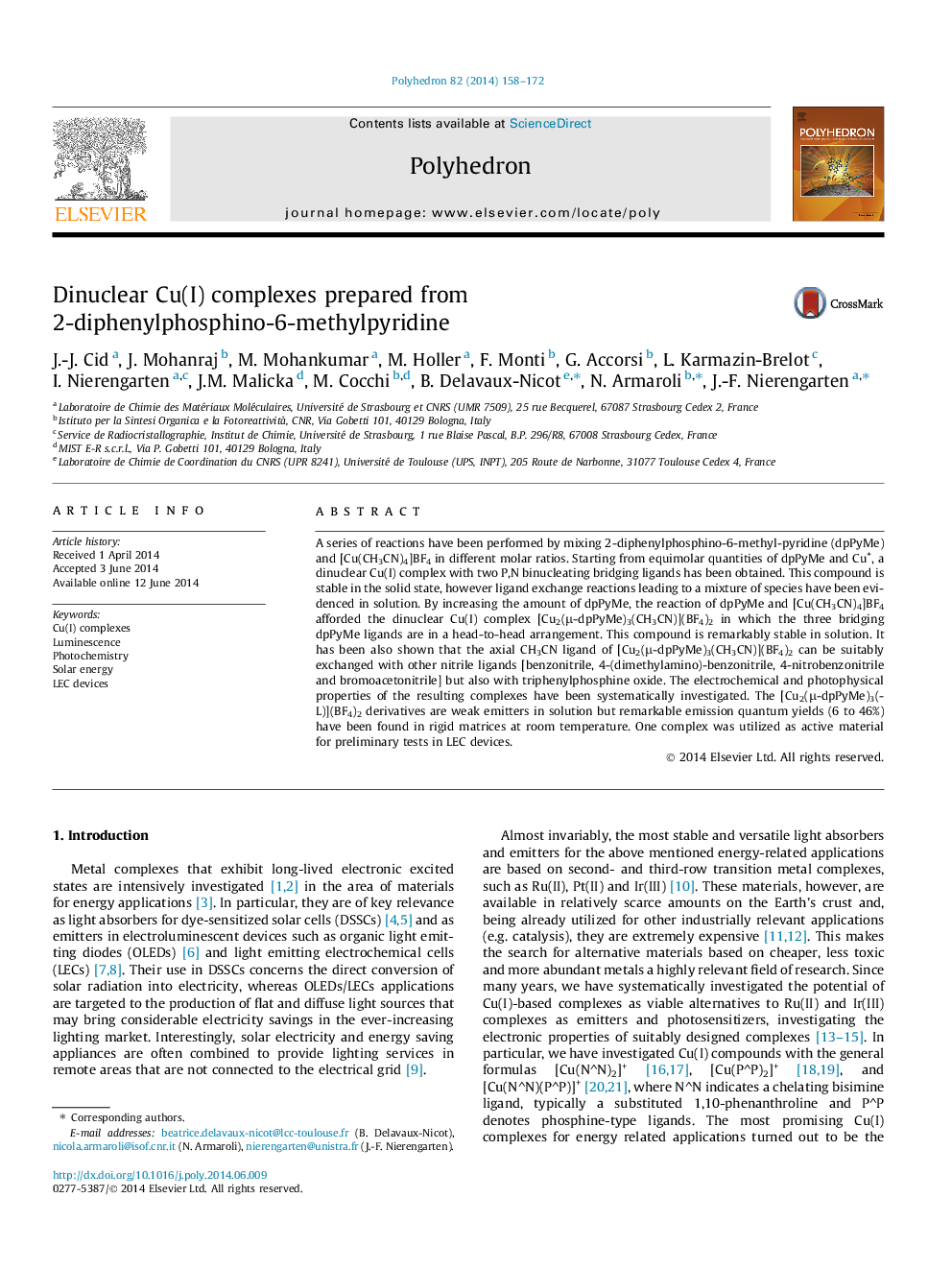| Article ID | Journal | Published Year | Pages | File Type |
|---|---|---|---|---|
| 1336451 | Polyhedron | 2014 | 15 Pages |
A series of reactions have been performed by mixing 2-diphenylphosphino-6-methyl-pyridine (dpPyMe) and [Cu(CH3CN)4]BF4 in different molar ratios. Starting from equimolar quantities of dpPyMe and Cu+, a dinuclear Cu(I) complex with two P,N binucleating bridging ligands has been obtained. This compound is stable in the solid state, however ligand exchange reactions leading to a mixture of species have been evidenced in solution. By increasing the amount of dpPyMe, the reaction of dpPyMe and [Cu(CH3CN)4]BF4 afforded the dinuclear Cu(I) complex [Cu2(μ-dpPyMe)3(CH3CN)](BF4)2 in which the three bridging dpPyMe ligands are in a head-to-head arrangement. This compound is remarkably stable in solution. It has been also shown that the axial CH3CN ligand of [Cu2(μ-dpPyMe)3(CH3CN)](BF4)2 can be suitably exchanged with other nitrile ligands [benzonitrile, 4-(dimethylamino)-benzonitrile, 4-nitrobenzonitrile and bromoacetonitrile] but also with triphenylphosphine oxide. The electrochemical and photophysical properties of the resulting complexes have been systematically investigated. The [Cu2(μ-dpPyMe)3(L)](BF4)2 derivatives are weak emitters in solution but remarkable emission quantum yields (6 to 46%) have been found in rigid matrices at room temperature. One complex was utilized as active material for preliminary tests in LEC devices.
Graphical abstractThis paper describes the preparation and detailed investigations of the electronic properties of 2-diphenylphosphino-6-methyl-pyridine (dpPyMe)-based Cu(I) complexes with the general formula [Cu2(μ-dpPyMe)2LX](BF4)2 (X = 1-6; L1 = acetonitrile; L2 = benzonitrile; L3 = 4-(dimethylamino)-benzonitrile; L4 = 4-nitrobenzonitrile; L5 = triphenylphosphine oxide; L6 = bromoacetonitrile). All of the compounds exhibit remarkable luminescence properties in PMMA matrix.Figure optionsDownload full-size imageDownload as PowerPoint slide
